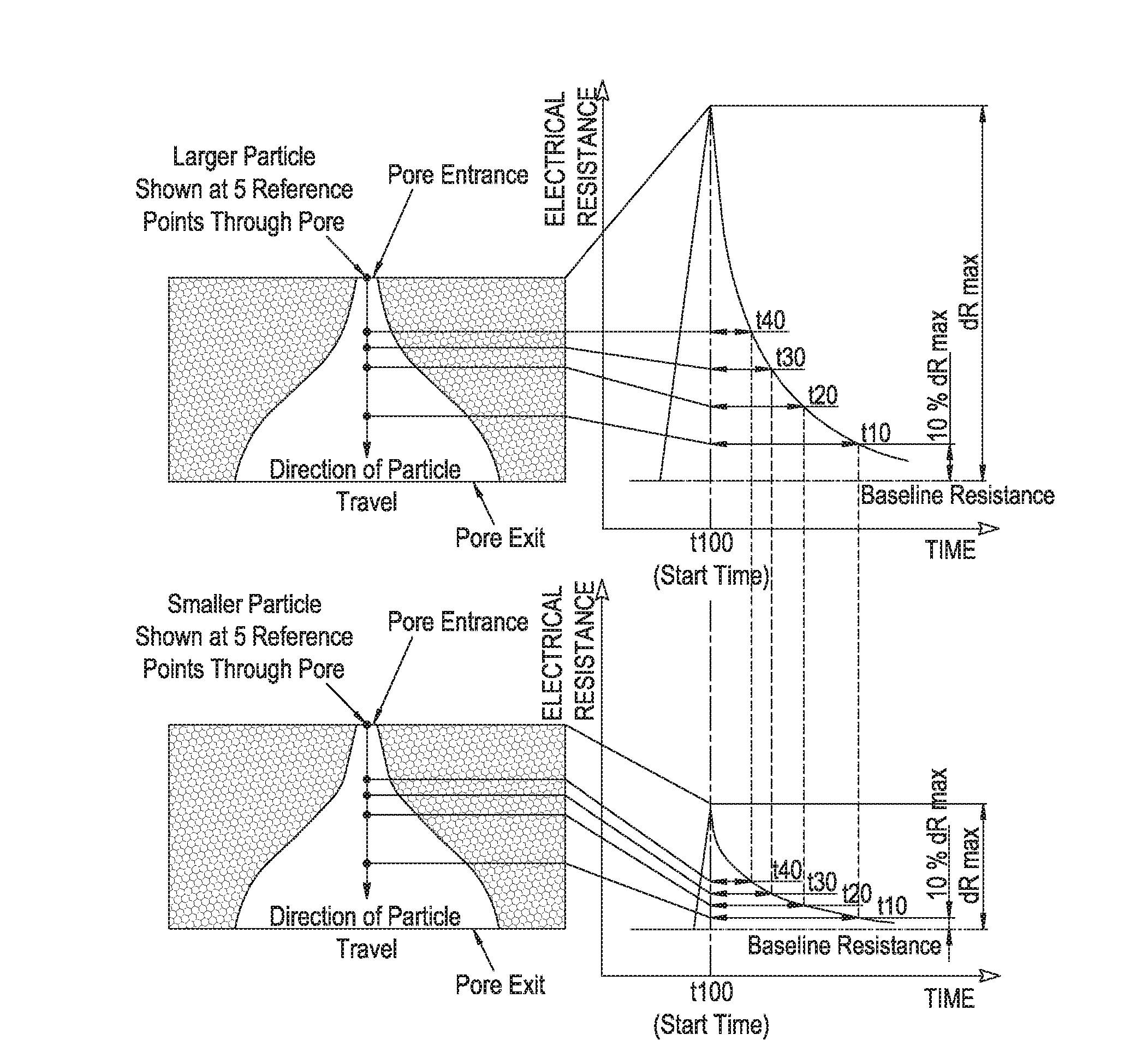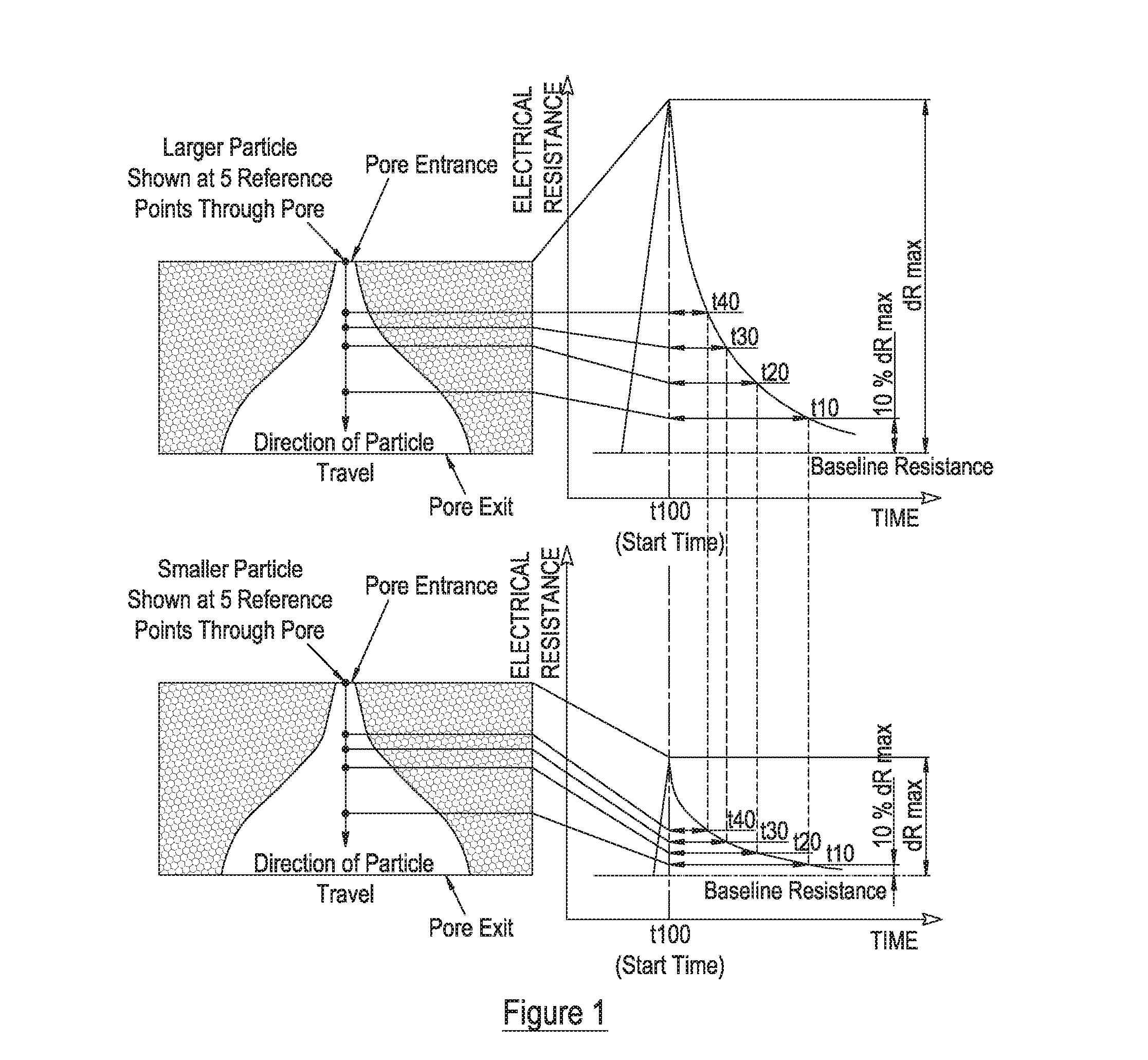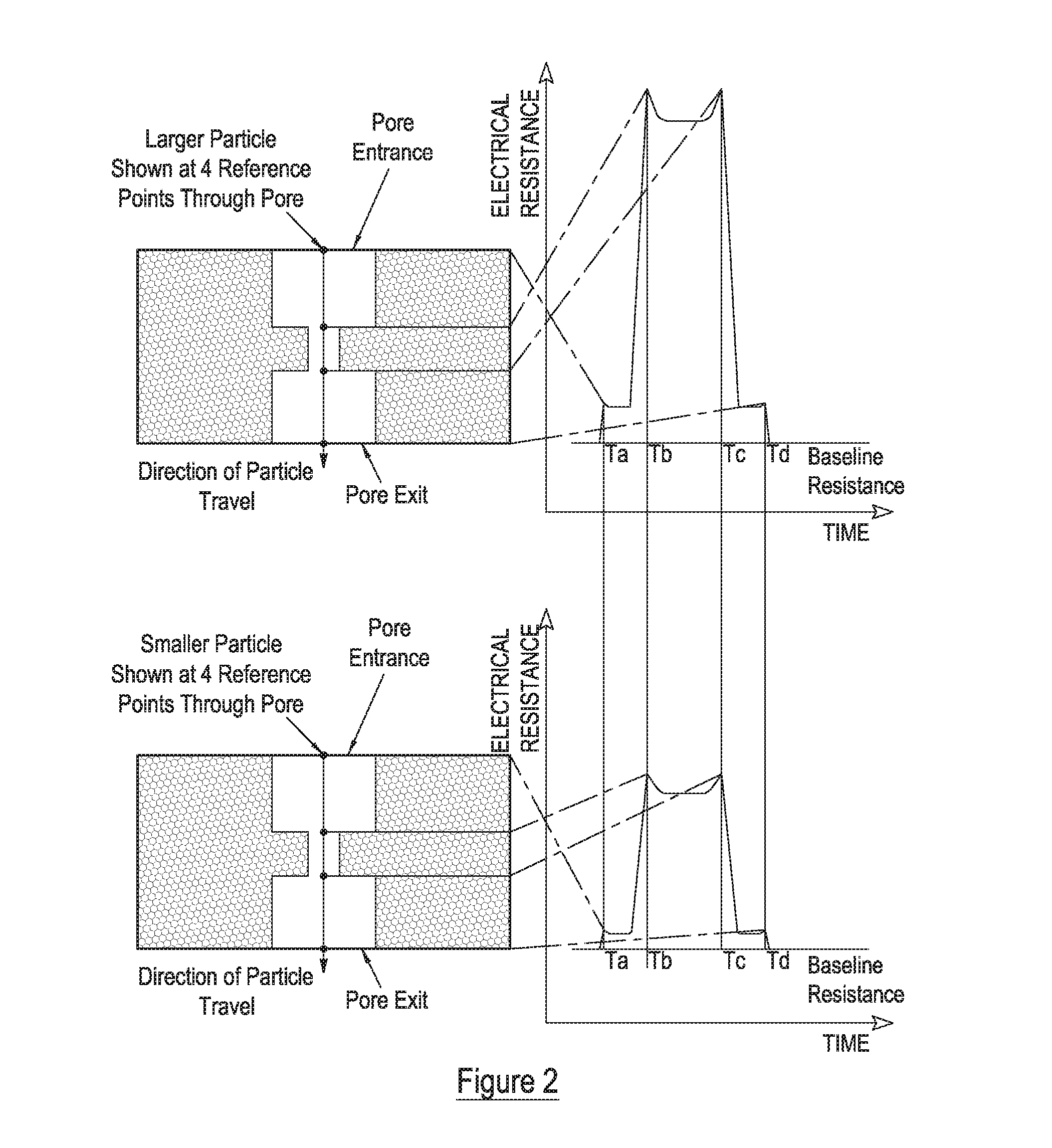Measurement of particle charge
a particle charge and charge technology, applied in the direction of measuring devices, material analysis through electric/magnetic means, instruments, etc., can solve the problems of complex algorithms applied to calculate particle size and charge, inability to separate similarly sized populations based on surface charge, and significant erroneous answers, etc., to achieve accurate measurement of the surface charge of objects
- Summary
- Abstract
- Description
- Claims
- Application Information
AI Technical Summary
Benefits of technology
Problems solved by technology
Method used
Image
Examples
example 1
[0116]This example shows the use of calibration particles to establish vxP and vxe Measurements of the calibration particles were made at three different applied voltages; 0.4V, 0.5V, and 0.6V. The results are displayed in FIG. 3 and FIG. 4. The measurement details are:
Nanopore—Izon NP200
[0117]Carboxylated polystyrene calibration particles CPC200[0118]—Izon Tris Buffer 0.1 M KCl[0119]Applied Voltages (V): 0.4 V, 0.5 V and 0.6 V[0120]Applied Pressure (Pap): 0 mm H2O[0121]Inherent Pressure (Pin): 4.7 mm H2O[0122]Particle Count—369 at V=0.4 V, 619 at V=0.5 V, 596 at V=0.6 V
[0123]At V=0 V there are no electrical forces so (vx)tot=(vx)c:[0124](vx)c 40=2806 s−1 and vxP40=(2806 / 4.7)=597 s−1 [0125](vx)c 30=1672 s−1 and vxP30=(1672 / 4.7)=356 s−1 [0126](vx)c 20=1131 s−1 add vxP20=(1131 / 4.7)=241 s−1 [0127](vx)c 10=626 s−1 and vxP10=(626 / 4.7)=84 s−1
(vx)c for the calibration particles can be calculated at any of the applied voltages, for example (vx)c 40 is calculated below at all three voltages...
example 2
[0128]This example demonstrates measuring the sample at multiple pressures. This illustrates the fact that system pressure can be varied without having any material effect on the analysis result as can be seen in FIG. 5. The Measurement details are:[0129]Calibration (and Sample) Particles—carboxylated polystyrene “CPC200”[0130]Nanopore—Izon NP200[0131]Electrolyte Izon Tris Buffer 0.1 M KCl[0132]Applied Voltage (V): 0.8 V[0133]Applied Pressure (Pap): 0 mm H2O to 8 mm H2O in steps of 2 mm (“P0” to “P8”)[0134]Inherent Pressure (Pin): 4.7 mm H2O[0135]System calibrated with ZERO applied pressure
[0136]It can be seen from FIG. 5 that the measured mean Zeta potential does not change significantly with applied pressure. This result is obtained using vxP against calibration particles measured at zero applied pressure. Pulse height is slightly truncated as applied pressure increases, leading to a reduced mean diameter value.
example 3
[0137]This example demonstrates measuring the sample at multiple bias voltages. This illustrates the fact that applied bias can be varied without having any material effect on the analysis result as can be seen in FIG. 6. The Measurement details are:[0138]Calibration (and Sample) Particles—carboxylated polystyrene “CPC200”[0139]Nanopore—Izon “NP200”[0140]Electrolyte—Izon Tris Buffer 0.1 M KCl[0141]Applied Pressure (Pap): 0 mm H2O[0142]Inherent Pressure (Pin): 4.7 mm H2O[0143]Applied Voltage (V): 0.8 V for calibration[0144]System calibrated with ZERO applied pressure
[0145]It can be seen from FIG. 6 that the measured mean Zeta potential does not change significantly with applied voltage. This result is obtained using vxe against calibration particles measured at 0.8 V and zero applied pressure.
PUM
 Login to View More
Login to View More Abstract
Description
Claims
Application Information
 Login to View More
Login to View More - R&D
- Intellectual Property
- Life Sciences
- Materials
- Tech Scout
- Unparalleled Data Quality
- Higher Quality Content
- 60% Fewer Hallucinations
Browse by: Latest US Patents, China's latest patents, Technical Efficacy Thesaurus, Application Domain, Technology Topic, Popular Technical Reports.
© 2025 PatSnap. All rights reserved.Legal|Privacy policy|Modern Slavery Act Transparency Statement|Sitemap|About US| Contact US: help@patsnap.com



